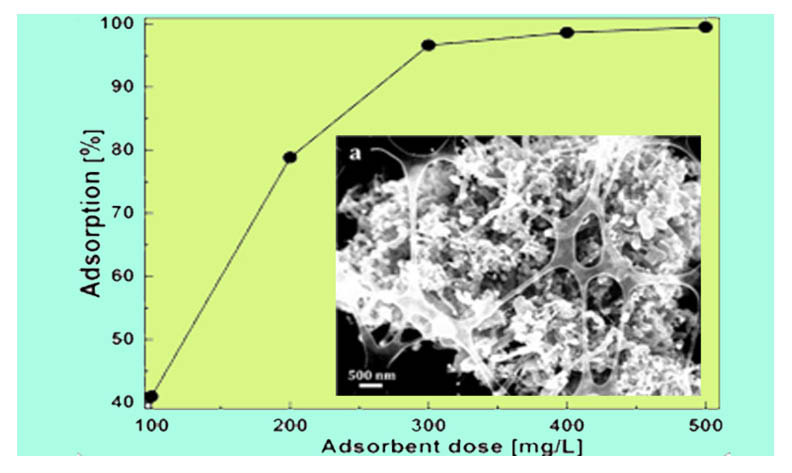Upcycling of plastic waste into multi-walled carbon nanotubes as efficient organic dye adsorbent
DOI:
https://doi.org/10.17344/acsi.2025.9145Abstract
Multi-walled CNTs with an average diameter of about 80 nm, a length of several micrometers and surface area (SBET) of 100 m2 g–1 were obtained by pyrolysis of low-density polyethylene waste. The potential of the resulting MWCNTs material to purify water containing organic dyes was tested with Bezaktiv Blau HE-RM (BB) and Bezaktiv Rot S-3B (BR) reactive dyes. 200 mg L–1 MWCNT material was used to follow the adsorption of 30 mg L–1, 40 mg L–1, 50 mg L–1 and 60 mg L–1 BB and BR at pH 3 and a temperature of ~25 oC. The results have shown that this material has a high potential as a sorbent, and its adsorption capacity of 257 mg g–1 (for Bezaktiv Blau HE-RM) and 213 mg g–1 (for Bezaktiv Rot) is close to some commercial MWCNTs and functionalized MWCNT-based adsorbents. The adsorption process was very fast, reaching 80–90 % of the dye removal in 10–15 minutes, and the equilibrium time was reached in 40–60 minutes. The adsorption isotherm showed that the Langmuir model was more suitable than the Freundlich model for describing the adsorption properties of the pollutants.

Downloads
Published
Issue
Section
License
Copyright (c) 2025 Gordana Bogoeva-Gaceva, Meri Sokolovska, Viktor Stefov, Metodija Najdoski, Sebastijan Kovačič

This work is licensed under a Creative Commons Attribution 4.0 International License.
Except where otherwise noted, articles in this journal are published under the Creative Commons Attribution 4.0 International License
